Gene therapy from hope to reality
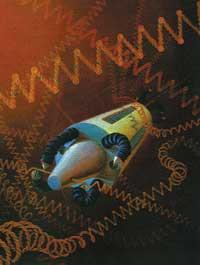
Gene therapy aims to resolve the error radically, since it uses DNA sequences to transform diseased cells and achieve a therapeutic effect. In this way it is possible to synthesize the molecule that the defective cells manufactured.
Genetic change can be done in two ways. Ex vivo is a therapy that consists of extracting cells from the patient, modifying them genetically in the laboratory and applying them back to the patient. In the in vivo mode the cells are transformed without being extracted. Figure 1 shows the main differences between the two therapies. A third way has recently been developed in which universal (non-patient) cells are genetically modified and applied to the patient. In this case, the cells are inserted alone or in capsules.
Introduction to gene therapy
The first clinical gene therapy session was conducted by the Rosenberg group in 1990. Patients with highly developed skin cancer were treated with genetically modified lymphocytes. Since then more than 500 clinical gene therapy sessions have been launched worldwide. In the beginning it was about solving the alterations produced by a single gene, replacing the defective gene with flawless copies. For example, cystic fibrosis, Duchenne muscular dystrophy, or familial hypercholesterolemia. Subsequently, the cells were genetically modified and treated complex diseases of unknown genetic origin. Cytotoxic strategies (causing cell death) and cytostatic (preventing cell proliferation) such as cancer or some types of heart disease have been used to do so.
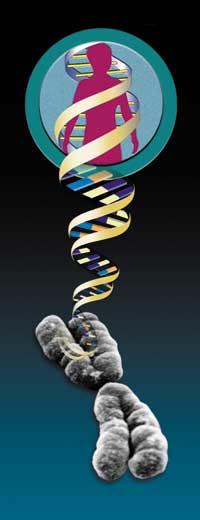
In short, during these 10 years the applications of gene therapy have grown steadily, while a great effort has been made in the search for new ways of application. The goal is to make these pathways more efficient and less toxic.
Essential Requirements of Gene Therapy
What should be taken into account when defining gene therapy? First, three things: with which cells or tissues you are going to work, what strategy you are going to use (ex vivo, in vivo or universal cells) and, of course, what product (insulin, leptin, clotting factors...) you want the cells to produce them. The DNA sequence. Once defined and acquired the DNA sequence is saved in a ‘cassette’. Cassette is a synthetic sequence in which the elements that regulate the representation of DNA are found.
Here is how the DNA sequence will be transported to the defective cells of the patient. Vectors are usually used. Vectors are gene carriers whose mission is to transfer the therapeutic gene to the defective cell and ensure the correct expression of the gene. There are many vectors, but they are classified as viral and non-viral (see figure 2).
Normally non-viral vectors keep the ‘cassette’ inside or on the surface. The most common are those formed by cationic lipids (lipoplexus) and cationic polymers (polyplexus). Most of them produce a low immulological response that prevents inflammation of the patient. However, nonviral vectors have little effect on gene transfer and also only express it in the short term.
Viral vectors, on the other hand, are based on the ability of viruses to reach cells and express genes significantly. Scientific advances have substantially improved the expression and safety of viral vectors, but toxicity remains the main obstacle to overcome by these vectors.
Finally, it should be defined how the vector will be inserted into the patient's organs or tissues, that is, whether it will be done by syringe, catheter, ... or otherwise.
Current situation
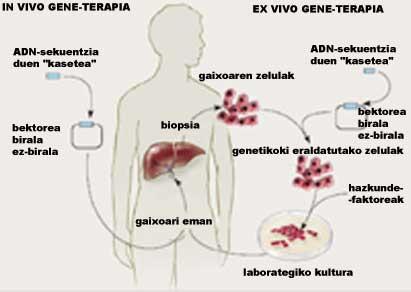
Currently gene therapy is applied in many diseases. Clinical sessions have been conducted in different laboratories and the efficacy and toxicity of gene therapy has been proven in humans. In view of the advances of the last decade it can be said that gene therapy has a great future, as long as diseases and patients are respected. The Marcelino Botin Foundation organized a seminar on the present and future of gene therapy at the Menéndez Pelayo International University, in which some examples of the advances mentioned were shown. Diabetes, hemophilia, skin diseases, cancer, changes in blood cells, etc. treatment strategies were presented through gene therapy.
The researchers gathered in Santander determined the conditions for applying gene therapy technology. First, proper transfer of the DNA sequence to diseased cells is essential, as well as long-term product indication. At the same time, the toxicity of these systems must be minimized to the maximum to avoid adverse side effects. If you want to work with cells to be implanted in animals or people, you need to find good culture systems in the laboratory and proper and safe transplant procedures.
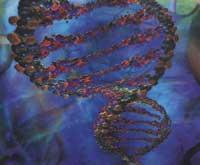
Grupo del proyecto de Biología Molecular, Celular y Terapia Génica de Ciemat, Jose L. Under the direction of Jorcano, he uses gene therapy to regenerate the epidermis and presents his results in Santander. It is intended to achieve an artificial skin useful for patients with burns, psoriasis or chronic ulcers. To do this, they have had the in vivo strategy and have created a skin that works as a bioreactor through the release of beneficial substances.
Hemophilia also arouses great interest among researchers. Gonzalo Hortelano, professor at the Canadian University of McMaster, uses gene therapy to combat hemophilia. Patients with hemophilia have few IX blood factors. Professor Hortelano has genetically modified some cells to flow this factor and introduced them into microcapsules. At the moment he has only tested them with laboratory mice, but hopes to start clinical sessions in the medium term. Katherine A. The High group uses viral vectors for the treatment of hemophilia. Clinical sessions have recently been initiated to analyze the efficacy and toxicity of this strategy in humans. According to Dr. High, good preliminary results allow the first gene therapy products to be prepared in 2004.
Certainly, cancer is the disease that more gene therapy sessions have boosted. In 2000, more than 300 protocols were approved in the United States. But it is as great as the interest that awakens the complexity of cancer. Many genes are involved in the process of tumor creation and many factors need to be taken into account.
Overall, the results of gene therapy are positive, but not as spectacular as originally thought. Therefore, it is necessary to analyze the two sides of the coin (see figure 3). The greatest success was obtained by the Pasteur Institute last year, when he cured ‘bubble children’ through an ex vivo program. It was the first time a pathology was completely cured by gene therapy. Unfortunately, on the cross of the coin is the death of the young Jesse. He died in 1999 in a clinical trial of adenobirus.
Obstacles and future
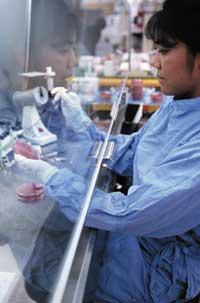
Before reaching hospitals, gene therapy must overcome a number of obstacles.
Most researchers consider that the greatest difficulties are technological. In this sense, it is evident the need to optimize the three basic components of gene therapy: DNA sequence, vectors and management pathway. Geneticists have discovered the genetic bases of diseases caused by a single gene or a group of genes. Vectors, both viral and non-viral, are increasingly efficient and show long-term safety. It is possible that in these years there has been less development of the treatment pathway due to the large number of technological and biopharmaceutical factors to be considered to achieve a correct obtaining.
The transformation of active ingredients into safe and effective doses has always been one of the fundamental objectives of pharmaceutical research. It seems therefore reasonable to think that the efforts of public institutions and private companies in this field will increase. In fact, the expectation of use of gene therapy largely depends on the correct dosage administration. This will require researchers from different areas to coordinate their efforts.
As has been seen, gene therapy has more requirements than other therapies, and ethical responsibilities are also greater. The safety of patients participating in clinical sessions cannot in any case be compromised by the sponsors or by the expectations created. Researchers should make it clear that gene therapy is developing and will not cure many diseases before the next decade. In addition, it is critical that patients, their families and regulatory organizations know precisely the potential benefits and risks of experimental gene therapy.
However, this realistic approach should not weaken the illusion of gene therapy. Gene therapy and other promising alternatives such as stem cells are at an early stage. Contrary to what was done with drug therapy, advances are being made respecting the scientific point of view and not testing medications with patients and seeing their effect. It is certainly the best guarantee of a prosperous future.

Vector Nature | Advantages | Inconvenience |
BIRALA | BIRALA | VIRAL |
Adenobirus | VIRAL | VIRALA |
BIRALA | VIRALA | VIRAL |
Polyplexus | NO | NO-VIRAL |
Top Reviews
Why did they choose to research gene therapy?
Free announcement : On the one hand, because it is a promising research area and therefore research. On the other hand, being a laboratory that carried out basic skin research, it was easy for us to perform the therapeutic part of the research and we decided to try it.

S.W. : Because gene therapy is an exciting scientific issue that has just been born and we are in preliminary stages. The scientific and clinical bases of gene therapy are fertilizing and the use of our genetic material to treat diseases makes a very powerful strategy. For these reasons we are developing gene release technology in suitable cells and tissues.
G.H. : Gene therapy XXI. I think it will play an important role in 20th century medicine. At the moment it is an incipient scientific issue and I find it very attractive to participate in the development of this field of research as far as possible.
What does gene therapy offer without other treatments?
Free announcement : Gene therapy offers an alternative to diseases. It addresses the disease from a scientific point of view and not as it has been done with orthodox medicines, testing and observing the results. Gene therapy is based on deeper scientific knowledge, knowledge of disease-related genes and aims to use them to cure them. But it has been more complicated than initially thought.
S.W. : Gene therapy has an important advantage than the difference from other therapies. Other therapeutic methods, such as surgery, radiation, medicines, etc. are designed to remove a disease or body function. Gene therapy, instead, supplies the body, gives it a substance it did not have. In the case of a genetic disease, the application of a flawless gene can cure the disease. This type of treatment can also be applied to other pathologies such as cancer or AIDS.
G.H. : It is true that traditional pharmacology has been preparing effective drugs to modify certain physiological functions for decades. But gene therapy offers the possibility to administer drugs continuously and steadily. Traditional medicines cannot provide this critical stability in many physiological processes. In addition, in some cases it is only teraupeutic when the product is inside the cells, not in the blood. So, medicines aren't always effective. On the other hand, the use of genetic material opens the doors to new alternatives, such as the possibility of generating new immune responses in the body. Finally, and especially in the case of chronic diseases, gene therapy can significantly reduce the cost of treatments. In the case of hemophilia, for example, a single gene therapy treatment is expected to replace current injections. Now the patient should be injected several times a week throughout life.
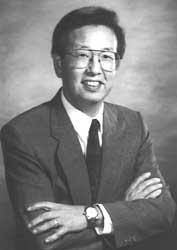
What are the main obstacles that gene therapy must overcome? Technological? Biological? Ethics?
Free announcement : I don't think there are ethical obstacles. Ethics must be taken into account, but it changes from person to person. For example, the ethics of the patient is different from that of the researcher, and that of the researcher and the journalist. With this I do not want to despise anyone, but to say that ethics is important and to take into account in our society. But today our problems are technological, not ethical. Vectors for the introduction of therapeutic genes into cells are not as perfect as we wanted and diseases are much more complex than we thought. We know too little and at the moment we can only cure diseases caused by a single defective gene. But in most diseases many genes intervene, where ignorance predominates.
S.W. : From a technological point of view, the main drawback is specificity, that is, how to selectively release the gene into the desired cell. Controlling gene activity is also very important. We want the gene to be expressed in a way that produces a therapeutic effect and avoid harmful effects. On the other hand, it is important to investigate which diseases can be cured by gene therapy and which cannot. From an ethical point of view, the scientific community is very clear that it will use it to cure gene therapy, not to improve man. Gene therapy is a strategy to treat diseases, not a technique to stimulate a person's abilities.
G.H. : I think the biggest technical difficulties are related to vectors. The optional vector must ensure patient safety and have therapeutic efficacy in this order, in addition to allowing its reissue. On the other hand, I consider that the great variability of one person to another is a factor to consider. In advance, the success of gene therapy will initially be limited to a few diseases. It will then spread progressively.
Have the high expectations generated by gene therapy benefited or impaired your work?

Free announcement : Nothing has influenced me, but it is true that it happens many times and, for example, what they live in the genome. At the moment biology has gathered enough knowledge to go from being basic science to applied science, that is, before we approached to study biology, but now we want to take advantage of it. Gene therapy and genomics are born from this change and we perceive them as an application. In the case of gene therapy the idea is quite simple. We intend to know the molecular basis of diseases and identify defective genes for later healing.
We have the means and ability to do everything in the lab, but everything has been more complicated than we thought at first. And therefore, we have moved from the peak of optimism to the pressure of expectations. But reality is halfway. Gene therapy has shown good results in recent years and thanks to this we know that the objectives are not impossible, but also not easy. The question is that biology is applied science. There are people who sell ideas and are enriching in 24 hours and from there expectations arise.
S.W. : I think pessimism first appeared two years ago, when a patient died in a clinical session. It was then that the bad image of dangerous gene therapy arose. Consequently, researchers and regulators of clinical sessions reversed and thoroughly reviewed all protocols. The incident has made the requirements for a clinical session higher and the control much stricter. The death of two years ago was tragic, but we learned a lot.
G.H. : I think it has hurt him. They have awakened false expectations among sick and family members and the same sentiment has spread throughout society. In this environment of warmth, numerous clinical sessions have begun, although some have little scientific basis. As a result, many sessions have failed. In view of these discouraging results, more emphasis has been placed on increasing the basic knowledge of gene therapy and the first hopeful results have been obtained.
Gorka Orive Arroyo
Buletina
Bidali zure helbide elektronikoa eta jaso asteroko buletina zure sarrera-ontzian











